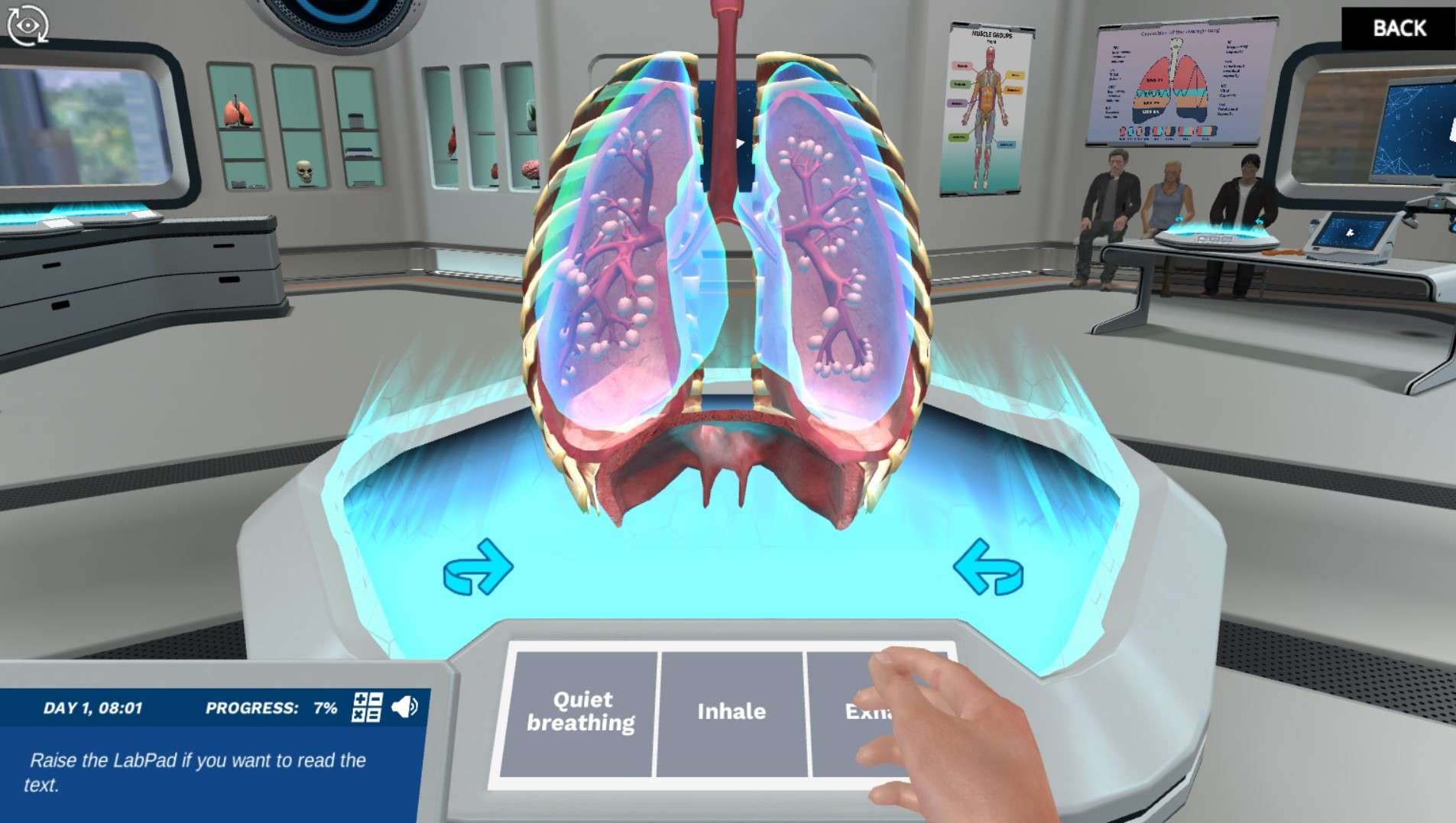Heading 1
Heading 2
Heading 3
Heading 4
Heading 5
Heading 6
Lorem ipsum dolor sit amet, consectetur adipiscing elit, sed do eiusmod tempor incididunt ut labore et dolore magna aliqua. Ut enim ad minim veniam, quis nostrud exercitation ullamco laboris nisi ut aliquip ex ea commodo consequat. Duis aute irure dolor in reprehenderit in voluptate velit esse cillum dolore eu fugiat nulla pariatur.
Block quote
Ordered list
- Item 1
- Item 2
- Item 3
Unordered list
- Item A
- Item B
- Item C
Bold text
Emphasis
Superscript
Subscript
About This Simulation
Join us in Labster's Anatomy and Physiology Lab to explore the physiology of pulmonary ventilation and learn about the structure, functions, and impairments of the respiratory system.
Learning Objectives
- Describe the structure and mechanics of pulmonary ventilation
- Define and calculate pulmonary air volumes and capacities
About This Simulation
Lab Techniques
- Structure of Respiratory System
- Spirometry
- Lung Volumes
- Lung Capacity Calculation
- Diagrams analysis
Related Standards
- EHEA First Cycle
- Early Stage Bachelors Level
- EHEA Short Cycle
- FHEQ 6
- Intermediate Stage Bachelors Level
- SCQF 9
- SCQF 10
- US College Year 1
- US College Year 2
- US College Year 3
Learn More About This Simulation
Breathing is a matter of life or death! In this simulation, you will be introduced to the respiratory system and what makes it work. You will learn the different stages of pulmonary ventilation and calculate the amount of air our lungs manage with every single breath. Everyone is different and many things, like asthma or pregnancy, can affect the way our respiratory system performs.
Observe the breathing process
One of the great things about being in a virtual lab is that you can use a very realistic and high-tech hologram to observe all the muscles and organs that play an important role in the process of breathing. Click on different buttons to choose between quiet breathing, inspiration, or expiration and experience how the lungs, diaphragm, and other muscles behave accordingly.
Test lung volumes with a spirometer
Take advantage of the opportunity to use a spirometer to test the lung volumes of three different people. Here, you will learn how some of the ways pregnancy or asthma affects the functioning of the respiratory system.
Calculate capacities
Get a more detailed look at how different lungs perform by calculating their real capacities using the resulting values from the spirometry test. Observe how values like the Vital Capacity and the Functional Residual Capacity vary between the subjects and match each pair of lungs with their owner.
For Science Programs Providing a Learning Advantage
Boost STEM Pass Rates
Boost Learning with Fun
75% of students show high engagement and improved grades with Labster
Discover Simulations That Match Your Syllabus
Easily bolster your learning objectives with relevant, interactive content
Place Students in the Shoes of Real Scientists
Practice a lab procedure or visualize theory through narrative-driven scenarios


FAQs
Find answers to frequently asked questions.
Heading 1
Heading 2
Heading 3
Heading 4
Heading 5
Heading 6
Lorem ipsum dolor sit amet, consectetur adipiscing elit, sed do eiusmod tempor incididunt ut labore et dolore magna aliqua. Ut enim ad minim veniam, quis nostrud exercitation ullamco laboris nisi ut aliquip ex ea commodo consequat. Duis aute irure dolor in reprehenderit in voluptate velit esse cillum dolore eu fugiat nulla pariatur.
Block quote
Ordered list
- Item 1
- Item 2
- Item 3
Unordered list
- Item A
- Item B
- Item C
Bold text
Emphasis
Superscript
Subscript
A Labster virtual lab is an interactive, multimedia assignment that students access right from their computers. Many Labster virtual labs prepare students for success in college by introducing foundational knowledge using multimedia visualizations that make it easier to understand complex concepts. Other Labster virtual labs prepare learners for careers in STEM labs by giving them realistic practice on lab techniques and procedures.
Labster’s virtual lab simulations are created by scientists and designed to maximize engagement and interactivity. Unlike watching a video or reading a textbook, Labster virtual labs are interactive. To make progress, students must think critically and solve a real-world problem. We believe that learning by doing makes STEM stick.
Yes, Labster is compatible with all major LMS (Learning Management Systems) including Blackboard, Canvas, D2L, Moodle, and many others. Students can access Labster like any other assignment. If your institution does not choose an LMS integration, students will log into Labster’s Course Manager once they have an account created. Your institution will decide which is the best access method.
Labster is available for purchase by instructors, faculty, and administrators at education institutions. Purchasing our starter package, Labster Explorer, can be done using a credit card if you are located in the USA, Canada, or Mexico. If you are outside of North America or are choosing a higher plan, please speak with a Labster sales representative. Compare plans.
Labster supports a wide range of STEM courses at the high school, college, and university level across fields in biology, chemistry, physics, and health sciences. You can identify topics for your courses by searching our Content Catalog.












.png?fm=jpg&w=450&h=400)





